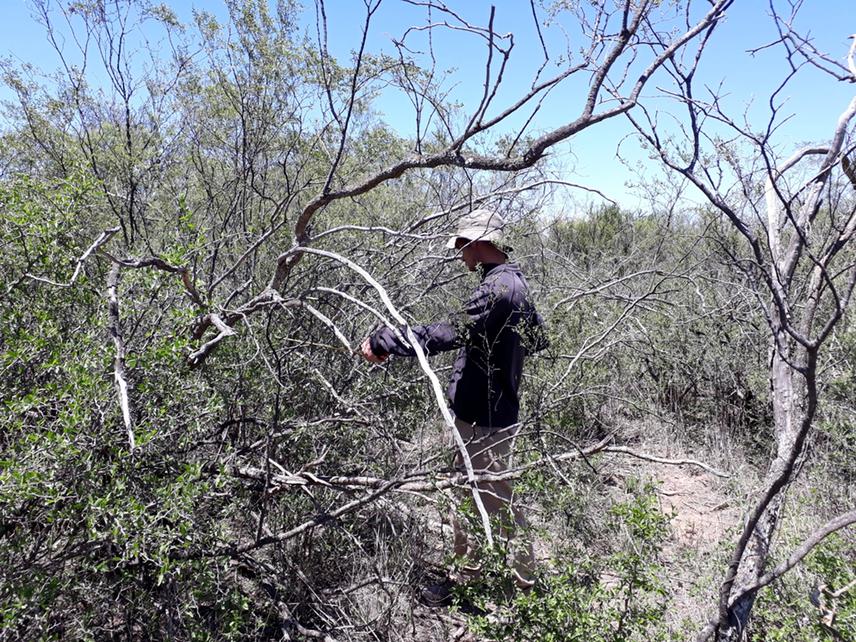Pedro David Fernandez
The Dry Chaco contains the most active deforestation frontier and the major woodland reserve of Argentina. Since 2007, the National Government regulates woodland uses based on their conservation value through a law. One category allows establishing production systems that integrate environmental benefits from forests. The most frequent use in these zones since the law implementation is silvopastoral system. In the future their extension could reach more than 14 millions of hectares. Through this project, we will assess the conservation value of these systems, evaluating ecosystem services and components of biodiversity, such as carbon sequestration and mammal communities with different approaches.

Dr. Murray measuring a shrub for carbon estimation in woodland patch in San Luis farm.
The aim of this project is to contribute to a better understanding of ecosystem service (ES) supply and potential for preserving native medium-large mammals of silvopastoral systems in the Dry Chaco. We will focus in Argentinean provinces of Catamarca, San Luis, Salta and Santiago del Estero to evaluate ES related with forest structure and functioning (e.g. Carbon sequestration, aboveground productivity, habitat quality, soil erosion), biodiversity (medium large mammal communities), and soil quality (chemical, physic and organic properties).
Our objectives are:
1- Assessing biomass stocks, aboveground productivity, diversity and forest structure (e.g. diameter classes, number of individuals, height distribution) of silvopastoril systems in a gradient of tree cover and rainfall;
2- Evaluating medium-large mammal richness, composition and individual patterns of activity in different forest structures of silvopastoril systems, using native forests as reference;
3- Analyzing soil quality variables of such systems including physic, chemical and microbiological indicators;
4- Analyzing the consistence of the responses found in 1-. 2- and 3- at different spatial scales, to identify better conditions for cattle development and ecosystem conservation. We aim to provide information about the conservation value of silvopastoral systems compared to that of native forests across a rainfall gradient, and to understand and measure the quality of this system as provider of ES. Also, we will evaluate the level of conflicts between local ranchers and native species. As one outcome of this project, we will develop technical reports and best practices to reconcile food production and environmental conservation in this highly threatened region.